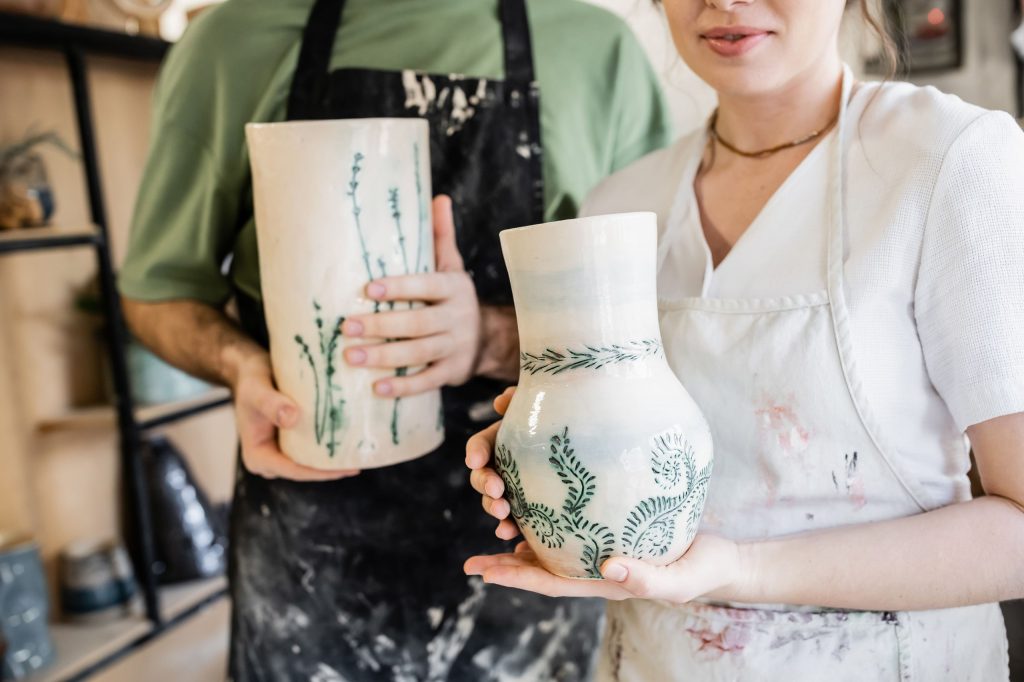In an increasingly fast-paced and digital world, many people are rediscovering the joy of slowing down — of using their hands, not just their heads. Among the many creative outlets gaining popularity, working with clay stands out as one of the most rewarding and grounding. But what is it about ceramics and pottery that captures the imagination of so many across generations, cultures, and lifestyles?
A Connection to Nature
Clay is more than just a material — it’s earth itself. It comes from the ground, shaped by nature over centuries, and is transformed by water, air, and fire into something lasting and meaningful. This elemental connection draws many people to ceramics. When you sit at the wheel or shape a vessel by hand, you’re not just making a pot — you’re engaging in a dialogue with the natural world.
There’s also a satisfying honesty in the process. Clay doesn’t lie. It records every touch, every movement. If you rush it, it collapses. If you force it, it resists. It teaches patience, mindfulness, and care — qualities that often get lost in modern life.
A Practice Rooted in History
Pottery is one of the oldest human crafts. Archaeologists have found ceramic vessels that are over 20,000 years old. Ancient civilizations across the world developed their own styles, techniques, and symbolic meanings through clay. From delicate porcelain in China to rugged earthenware in Africa, each culture has used ceramics not just for utility, but to tell stories, preserve traditions, and express beauty.
By learning ceramics today, you are stepping into a long tradition. You’re not just learning a skill; you’re becoming part of a global, timeless craft that links people across centuries.
Therapy Through Touch
There’s growing evidence that working with your hands — especially in tactile, physical crafts like ceramics — has therapeutic benefits. Psychologists have observed that people who regularly practice pottery often experience reduced anxiety, improved focus, and increased emotional well-being.
There’s something uniquely healing about shaping clay. It grounds you. It gives form to your inner world. For many, pottery becomes more than a hobby — it becomes a form of self-care and emotional expression. In a way, the wheel becomes a kind of meditation, the kiln a fire of transformation.
Creative Freedom in Every Form
Another reason for the enduring appeal of ceramics is the sheer creative freedom it allows. Clay can become anything: a functional mug, a decorative sculpture, an abstract form. It welcomes experimentation. It forgives mistakes (most of the time). And even when pieces crack or warp, they teach valuable lessons.
You don’t need to be an artist to start with clay. You only need curiosity and a willingness to get your hands dirty. Each project becomes a reflection of your ideas, style, and personality. No two pieces are ever exactly the same — and that’s the beauty of it.
Joining a Growing Community
In recent years, ceramics studios have been popping up in cities and towns around the world. More people are seeking real-world experiences — things they can touch, share, and keep. Online courses and communities have also made it easier than ever to learn from home and connect with fellow makers.
Modern Ceramics was created with that in mind — to make the experience of learning ceramics accessible, supportive, and inspiring. Whether you’re sculpting your first bowl or glazing your tenth mug, you’re not alone. You’re part of a growing, global community that believes in creativity, connection, and craftsmanship.

